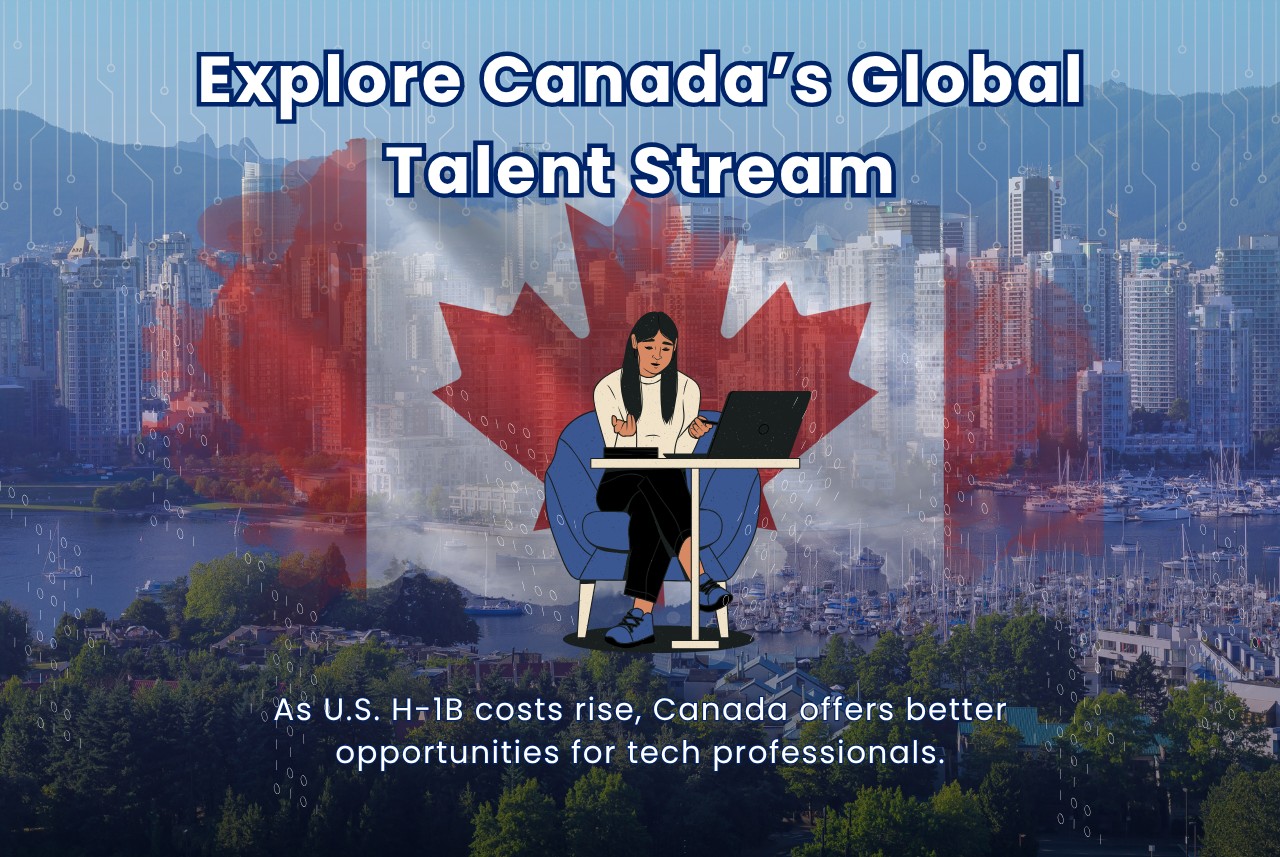
Understanding the E-2 Essential Employee: What It Is and Who Qualifies
Most people associate the E-2 visa with investors launching or buying a business in the U.S. Yet what’s less commonly known is that certain employees of E-2 businesses ca
As the U.S. makes it harder to hire foreign tech workers, Canada’s Global Talent Stream stands out as the best alternative for employers and skilled workers.
On September 19, President Trump announced a $100,000 USD government fee for H-1B petitions. This applies to the 2026 lottery and all new H-1B petitions submitted after that date.
For years, the U.S. has been the top destination for international tech professionals through the H-1B visa program. However, with higher costs, more risks and growing uncertainty, many employers are rethinking their options and skilled workers are now looking north, specifically to Canada’s Global Talent Steam (GTS).
Why Canada’s Global Talent Stream Stands Out
No immigration pathway is ever simple, but the GTS offers clear advantages over the H1-B program:
- Lower costs: Canadian Employers pay $1,000 CAD per worker.
- Processing: The GTS can be approved within two weeks.
- No Lottery: If the role qualifies, the application moves forward.
- Predictability: Employers and workers know where they stand.
The Global Talent Stream is an expedited Labour Marker Impact Assessment (LMIA) and part of the Temporary Foreign Worker Program. This type of LMIA does not require extensive advertisement, as long as the employer can show efforts to hire from the local Canadian pool of candidates. The GTS program is suitable for companies that are innovative and require highly unique and specialized talent to help companies scale up and grow or skilled IT workers in a particular predetermined list of occupations.
While the GTS does not directly grant permanent residency, it serves as a strong entry point. Many skilled workers can later secure Canadian Permanent Residency through programs like Express Entry and Provincial Nominee Programs, which are options the U.S. does not offer.
For employers, this makes hiring simpler and more affordable. For skilled workers, it provides stability and realistic long-term opportunity.
Canadian Cities Competing with Silicon Valley
Aside from immigration policies, Canadian cities are growing as places where tech workers and companies can thrive.
- Toronto has become one of North America’s fastest growing tech hubs.
- Vancouver is internationally recognized in video games, VFX, and clean tech.
- Montreal is a world leader in AI and machine learning.
- Waterloo, Ottawa, and Calgary are attracting new companies, startups, and investment every year.
Together, these cities are positioning Canada as serious competitors to Silicon Valley and offering skilled workers and employers more options.
The Reality and The Opportunity
While Canada’s Global Talent Stream offers clear advantages, it is not an “easy” pathway. Employers must meet strict program requirements, and skilled workers must also qualify.
Every application requires careful strategy, thorough preparation, and long-term planning. This is where experienced Canadian legal guidance makes all the difference. View more details on our site here.
At Pilkington Law Firm, we work with employers and skilled workers who qualify under Canada’s programs. Our team helps you navigate the process with confidence and clarity.
Contact us today to book a consultation and find out if you’re eligible under the Global Talent Stream.
n also qualify, even if they haven’t made a personal investment.
This pathway is sometimes referred to as the “E-2 Essential Employee”, but before getting too excited, it’s important to clearly understand what this path involves and what doesn’t.
It’s Not a Different Type of Visa
There is no separate sub-category or visa type called the “E-2 Essential Employee Visa.”
This is not a shortcut or loophole.
Even though it’s often described differently online, this is still a standard E-2 visa. The key difference is that the applicant is coming as an employee of a business already approved under the E-2 program, rather than as an investor.
There Are Strict Qualifications for an E-2 Employee
This is not an easy immigration route.
The U.S. government carefully reviews:
- Whether your skills are truly essential to the business
- Whether your role is justified (not basic or easily filled locally)
- Whether the business is operational, active, and capable of supporting your position
To qualify as an E-2 employee, you must:
- Share the same nationality as the treaty company.
- Be employed by, or have a proposed job offer from, a business approved under the E-2 program.
- Hold a position that requires essential skills, or a managerial or executive position
Important: There is no requirement to already be employed by the company.
This can be a valuable pathway for individuals with high level skills, even if they don’t have the funds to invest themselves.
Not All Countries Qualify
The E-2 visa is only available to nationals who share the same nationality as the treaty company and whose country has an E-2 treaty with the United States.
If you’re unsure whether your country qualifies, it’s best to speak with an immigration lawyer.
Consult with a Lawyer You Can Trust.
Some online content promotes the “E-2 Essential Employee” visa as a simple alternative to investing, but this can lead to false hope or confusion.
If you are considering the E-2 visa, whether as an investor or employee, it’s important to get advice based on your actual eligibility.
Your time matters. That’s why Pilkington Law Firm is committed to providing practical, honest, and strategic immigration advice focused on what truly works.
Wondering if the E-2 visa is a good option for you?